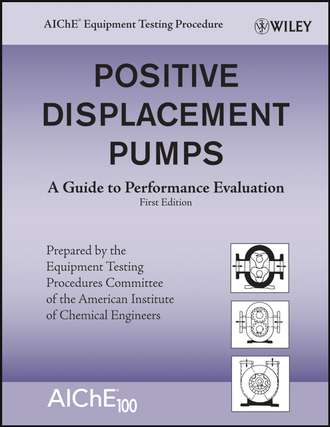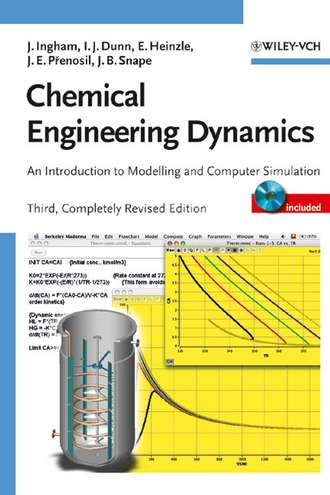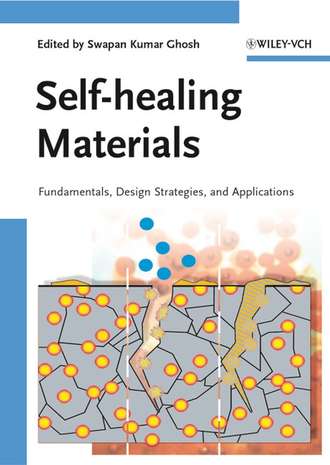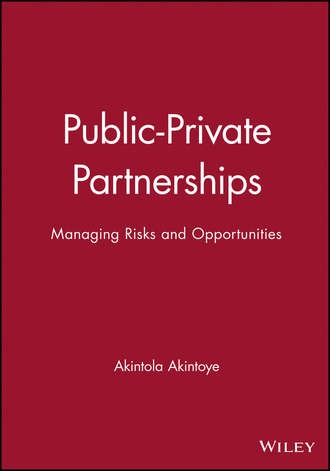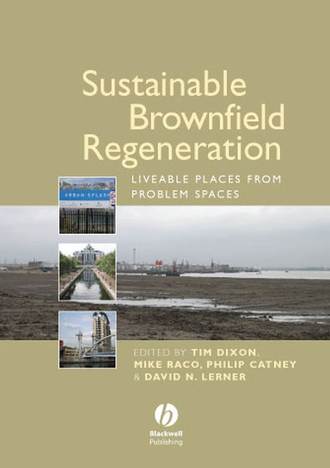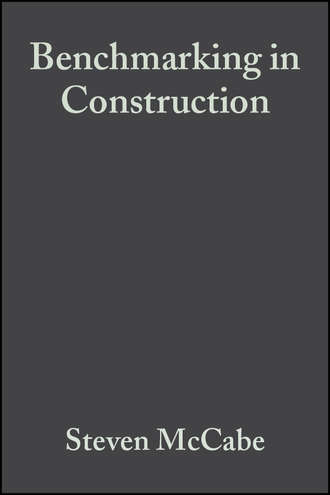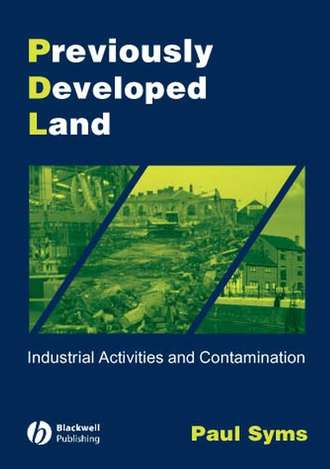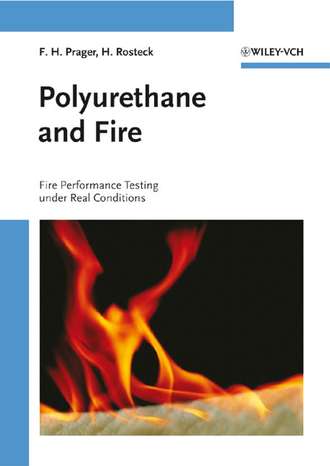техническая литература
Combinatorial Materials Science
Balaji Narasimhan
Combinatorial Materials Science describes new developments and research results in catalysts, biomaterials, and nanomaterials, together with informatics approaches to the analysis of Combinatorial Science (CombiSci) data. CombiSci has been used...
Wood-Plastic Composites
Anatole Klyosov A.
A comprehensive, practical guide to wood-plastic composites and their properties This is the first book that presents an overview of the main principles underlying the composition of wood-plastic composite (WPC) materials and their performance...
Microbial Fuel Cells
Bruce Logan E.
The theory, design, construction, and operation of microbial fuel cells Microbial fuel cells (MFCs), devices in which bacteria create electrical power by oxidizing simple compounds such as glucose or complex organic matter in wastewater,...
Plastic Forming Processes
Maurice Reyne
Plastics may undergo an industrial treatment for many reasons including strength, chemical inertness, biodegradability, and heat resistance. Providing an overview of the various treatments utilized in the plastics industry, this title examines...
Practical Process Control
Cecil Smith L.
Practical Process Control (loop tuning and troubleshooting). This book differs from others on the market in several respects. First, the presentation is totally in the time domain (the word «LaPlace» is nowhere to be found). The focus of the...
Solid State Polymerization
Stamatina Vouyiouka N.
The most current guide to solid state polymerization Solid State Polymerization (SSP)is an indispensable tool in the design, manufacture, and study of polymers, plastics, and fibers. SSP presents significant advantages over other polymerization...
Polymer Reaction Engineering
Jose Asua
Polymers are an example of “products-by-process”, where the final product properties are mostly determined during manufacture, in the reactor. An understanding of processes occurring in the polymerization reactor is therefore crucial to...
Positive Displacement Pumps
American Institute of Chemical Engineers (AIChE)
Positive Displacement Pumps is a current reference guide for positive displacement pumps for both traditional and state-of-the-art testing methods, and serves as a bridge between textbooks and manufacturer's literature by providing equipment...
Industrial Water Management
William Byers
This CD-ROM shows how to systematically incorporate the principles of water conservation, recycling, and reuse into the design of new plants, retrofits of existing systems, and technology development. Technology summaries and case studies that...
Principles of Polymerization
George Odian
The new edition of a classic text and reference The large chains of molecules known as polymers are currently used in everything from «wash and wear» clothing to rubber tires to protective enamels and paints. Yet the practical applications of...
Beyond Equilibrium Thermodynamics
Hans ?ttinger Christian
Beyond Equilibrium Thermodynamics fills a niche in the market by providing a comprehensive introduction to a new, emerging topic in the field. The importance of non-equilibrium thermodynamics is addressed in order to fully understand how a...
Integrated Chemical Processes
Kai Sundmacher
This is the first book dedicated to the entire field of integrated chemical processes, covering process design, analysis, operation and control of these processes. Both the editors and authors are internationally recognized experts from...
Supercritical Carbon Dioxide
Thierry Meyer
Recently, supercritical fluids have emerged as more sustainable alternatives for the organic solvents often used in polymer processes. This is the first book emphasizing the potential of supercritical carbon dioxide for polymer processes from an...
Model Based Control
Mircea Cristea Vasile
Filling a gap in the literature for a practical approach to the topic, this book is unique in including a whole section of case studies presenting a wide range of applications from polymerization reactors and bioreactors, to distillation column...
Polymers and Light
Wolfram Schnabel
This first book to focus on the important and topical effect of light on polymeric materials reflects the multidisciplinary nature of the topic, building a bridge between polymer chemistry and physics, photochemistry and photophysics, and...
Chemical Engineering Dynamics
Elmar Heinzle
In this book, the modelling of dynamic chemical engineering processes is presented in a highly understandable way using the unique combination of simplified fundamental theory and direct hands-on computer simulation. The mathematics is kept to a...
Chemical Process Design
Alexandre Dimian C.
This practical how-to-do book deals with the design of sustainable chemical processes by means of systematic methods aided by computer simulation. Ample case studies illustrate generic creative issues, as well as the efficient use of simulation...
Tailor-Made Polymers
John Chadwick C.
This first comprehensive handbook on this exciting field provides readers with a clear understanding of the current state of the art, ingenious solutions and opportunities. Researchers from academia and industry present such emerging topics as...
Self-healing Materials
Swapan Ghosh Kumar
The book covers self-healing concepts for all important material classes and their applications: polymers, ceramics, non-metallic and metallic coatings, alloys, nanocomposites, concretes and cements, as well as ionomers. Beginning with the...
Modern Polymer Spectroscopy
Peter Wilhelm
Containing selected presentations from both academic institutions and industry held at the 17th European Symposium on Polymer Spectroscopy (ESOPS17), this volume covers the latest developments in the spectroscopic characterization of polymeric...
Sustainable Industrial Chemistry
Gabriele Centi
In recent years the need for sustainable process design and alternative reaction routes to reduce industry?s impact on the environment has gained vital importance. The book begins with a general overview of new trends in designing industrial...
Building Heat Transfer
Morris Davies Grenfell
A third or more of the energy consumption of industrialized countries is expended on creating acceptable thermal and lighting conditions in buildings. As a result, building heat transfer is keenly important to the design of buildings, and the...
Dynamics of Structures
Patrick Paultre
This book covers structural dynamics from a theoretical and algorithmic approach. It covers systems with both single and multiple degrees-of-freedom. Numerous case studies are given to provide the reader with a deeper insight into the...
Structural Health Monitoring
Daniel Balageas
This book is organized around the various sensing techniques used to achieve structural health monitoring. Its main focus is on sensors, signal and data reduction methods and inverse techniques, which enable the identification of the physical...
Construction Process Improvement
Brian Atkin
The construction process has come under intense scrutiny in recent times and this is set to continue as building owners and users demand better value for money from a more sustainable built environment. The construction sector’s actors are...
Public-Private Partnerships
Matthias Beck
Public Private Partnership is a key issue in the construction industry – causing much concern among contractors, funders and facility managers. Demand has been building for a thorough analysis … This edited book will familiarise both researchers...
Timber Designers' Manual
J. Baird A.
This major structural engineering manual covers overall detail design of structural timber and includes extensive tables and coefficients for speedy reference. The current edition takes account of revisions to BS 5268: Part 2 and outlines the...
Building Maintenance Management
Barrie Chanter
This new edition of an informative and accessible book guides building surveyors and facilities managers through the key aspects of property maintenance and continues to be of value to both students and practitioners. With the increasing cost of...
Sustainable Brownfield Regeneration
Mike Raco
Sustainable Brownfield Regeneration presents a comprehensive account of UK policies, processes and practices in brownfield regeneration and takes an integrated and theoretically-grounded approach to highlight best practice. Brownfield...
Benchmarking in Construction
Steven McCabe
This is the first post-Egan book to look at benchmarking and KPIs (key performance indicators) in the construction industry. Benchmarking is one of the key management techniques the construction industry now needs to adopt if it is to meet...
Managing Built Heritage
Derek Worthing
This book examines management of the built cultural heritage through the use of the concept of cultural significance. It considers how and why cultural significance is assessed and how it can be used as an effective focus and driver for...
Building Contract Dictionary
David Chappell
Building Contract Dictionary provides a succinct, but authoritative reference to words, phrases and terms encountered in, and in connection with, building contracts. For the new edition all entries have been reconsidered and updated in light of...
Lightweight Sandwich Construction
J. Davies M.
Sandwich panels are being used increasingly as the cladding of buildings like factories, warehouses, cold stores and retail sheds. This is because they are light in weight, thermally efficient, aesthetically attractive and can be easily handled...
Earthquake Risk Reduction
David Dowrick J.
Encompassing theory and field experience, this book covers all the main subject areas in earthquake risk reduction, ranging from geology, seismology, structural and soil dynamics to hazard and risk assessment, risk management and planning,...
Transportation Decision Making
Samuel Labi
This pioneering text provides a holistic approach to decision making in transportation project development and programming, which can help transportation professionals to optimize their investment choices. The authors present a proven set of...
Flood Damaged Property
Robby Soetanto
With climate change and the development of property on flood plains, the flooding of buildings has become a considerable problem, both for property owners and their insurers. This book, based on extensive research, provides guidance on how to...
Building Contract Claims
David Chappell
Many building contract claims are ill-founded, often because the basic principles are misunderstood. This highly regarded book examines the legal basis of claims for additional payment, and what can and cannot be claimed under the main forms of...
Steel Designers' Manual
Buick Davison
This classic manual on structural steel design provides a major source of reference for structural engineers and fabricators working with the leading construction material. Based fully on the concepts of limit state design, the manual has been...
Previously Developed Land
Paul Syms
The redevelopment of former industrial sites, so-called 'brownfield' sites, is becoming increasingly important as space is required for inner city commercial developments and as housebuilders are forced by government policy to recycle land...
Evaluating Contract Claims
John Mullen
Most medium to large construction contracts include a claim for extra payment for variations or disruption to the programme. Whilst the causes of the claim are often well documented, what can and cannot be included in the payment is often...
Defective Construction Work
Kevin Barrett
Defective construction work, whether the result of inadequate design, faulty workmanship or poor materials – or some combination of these failings – is a frequent cause of legal disputes. Someone is usually to blame, either the builder or one or...
Recommendations on Excavations
Deutsche Gesellschaft f?r Geotechnik e.V. / German Geotechnical Society
The aim of these recommendations is to harmonize and further develop the methods, according to which excavations are prepared, calculated and carried out. Since 1980, these have been drawn up by the working group «Excavations» at the German...
Tensile Surface Structures
Michael Seidel
Tensile surface structures are the visual expression of an intensive rethinking of the topic of building envelopes by designers. Advances in design methods, materials, construction elements and assembly and erection planning in the field of...
Statik im Erdbau
Henner T?rke
In diesem Buch werden Berechnungsverfahren und Versagenszust?nde sowie die Nachweise f?r B?schungen, D?mme sowie St?tzmauern vorgestellt und anhand ausgew?hlter Zahlenbeispiele verdeutlicht.
Shallow Geothermal Systems
Группа авторов
The recommendations summarise the state of the art. Their aim is the proper exploitation of the ground for geothermal purposes without adversely affecting the ground or the groundwater on the one hand and the operation of the system and nearby...
Polyurethane and Fire
Helmut Rosteck
A survey of all facets of the fire performance examination and evaluation of flexible and rigid polyurethane foams in the various fields of building construction, furniture and furnishings, transportation and electric appliances. The basic...
Project Portfolio Management
EPMC
Written by ten successful project portfolio managers from companies including AAA, Boeing, Franklin Templeton, Johnson & Johnson, Safeway, and the UK Government, this easy-to-follow guide takes you through the project portfolio management...
Managing the Unknown
Michael Pich
Managing the Unknown offers a new way of looking at the problem of managing projects in novel and unknown environments. From Europe's leading business school, this book shows how to manage two fundamental approaches that, in combination, offer...







